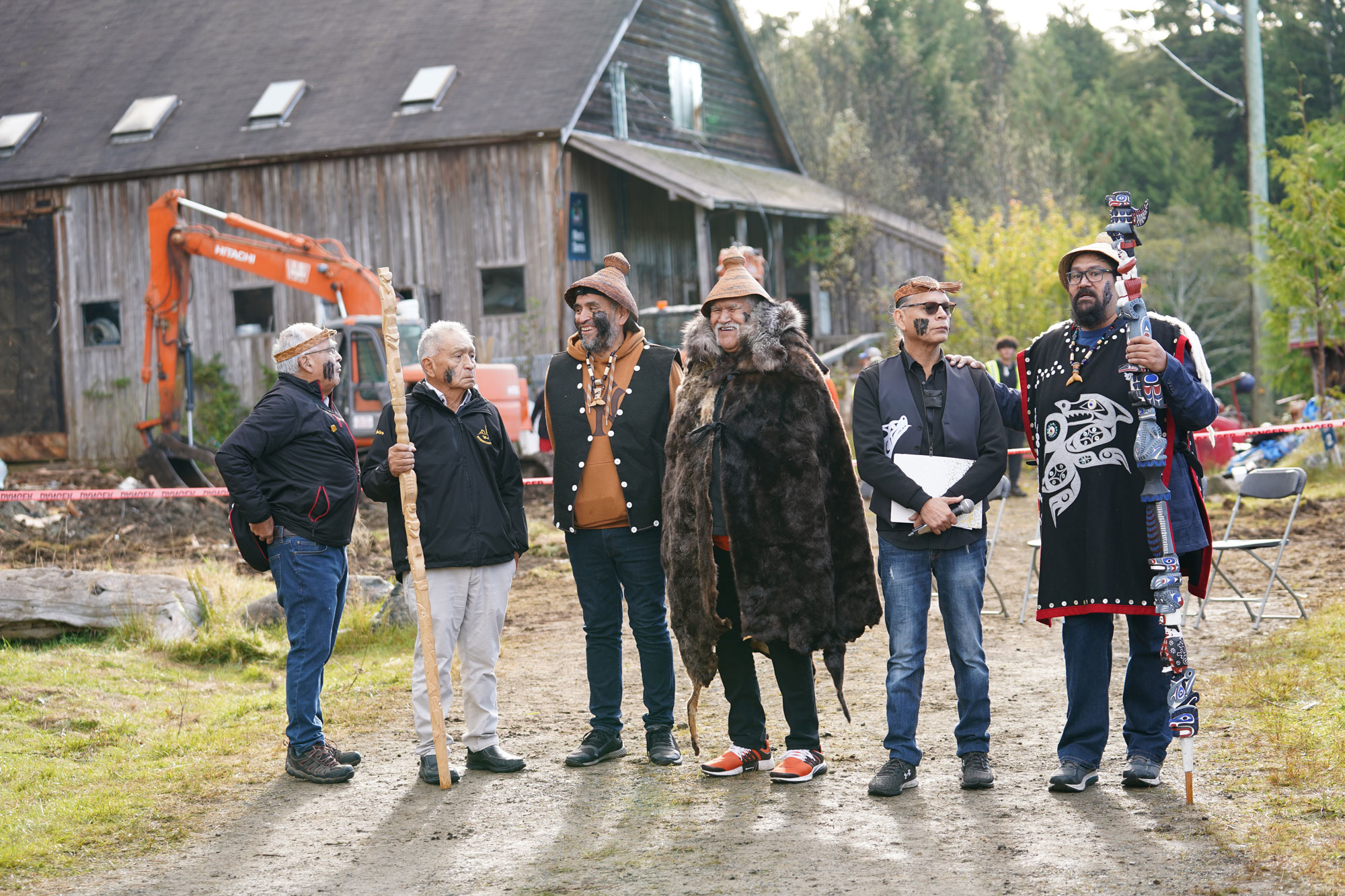
Survivors, families, community members and leaders gathered on m̓aackʷiiʔatḥ (Matsquiaht) on Meares Island to witness the demolition of the last three buildings of the former Christie Residential School. Hosted by the ʕaaḥuusʔatḥ (Ahousaht) Nation, the event marked a historic step toward healing at a site where generations of First Nations children were taken from their homes and families.

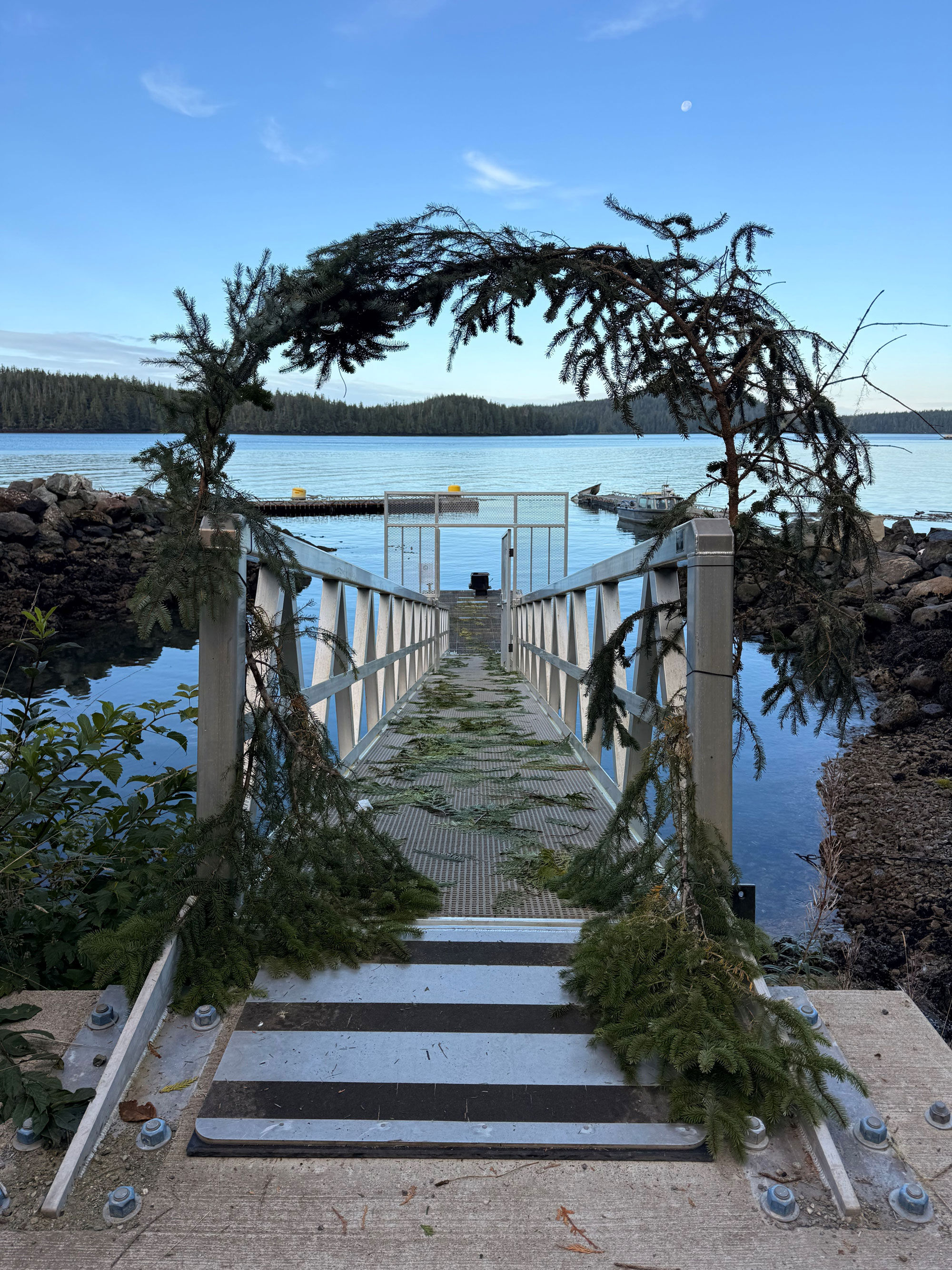
Survivors arrived by boat from Tofino, welcomed with cedar branches and an arch at the top of the boat ramp, symbols of protection and strength.
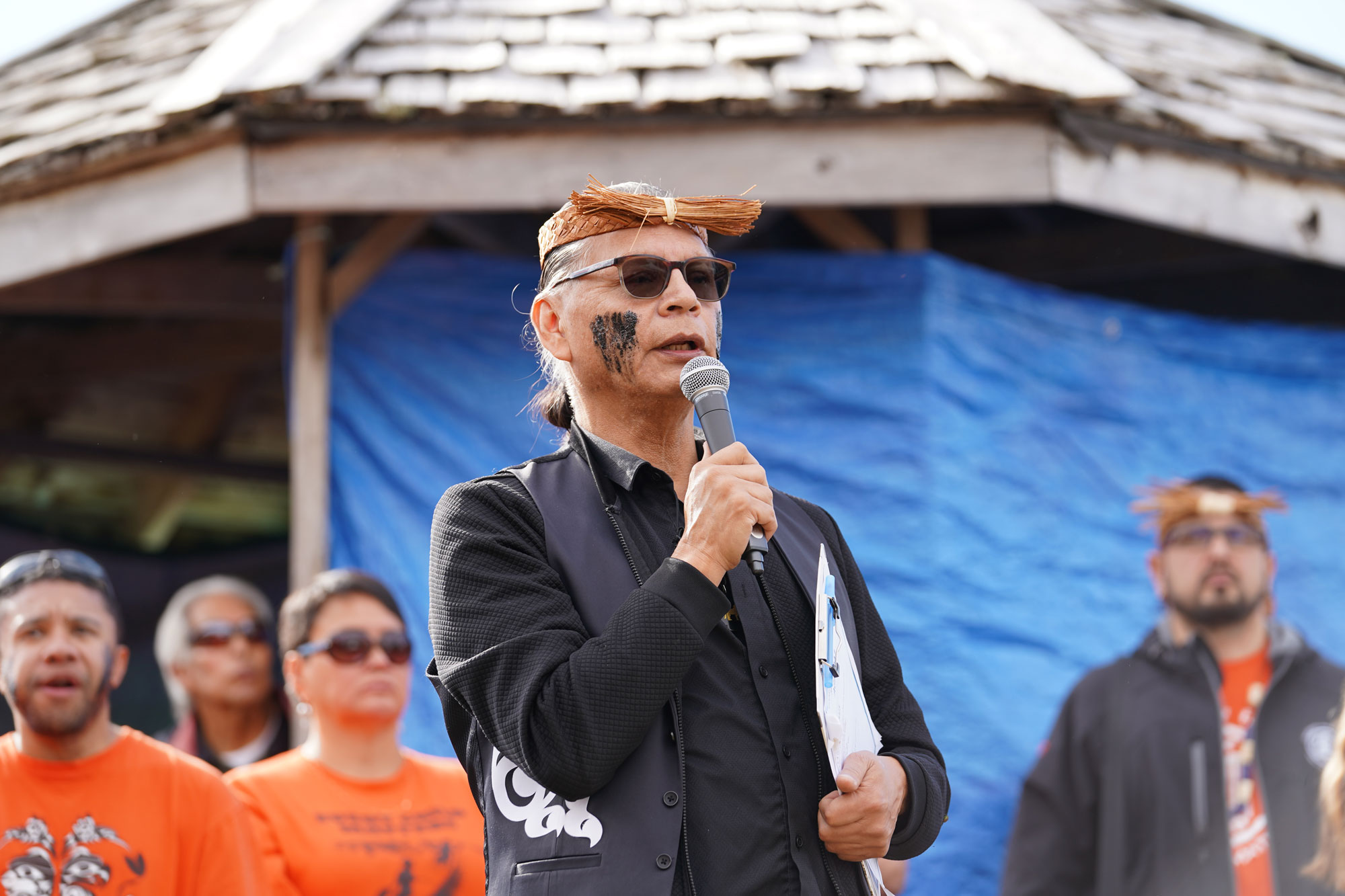
The day began with prayer, language, and protocol, grounding the gathering in culture. Greg Louie, Director at Large for the First Nations Health Authority and former Ahousaht Chief, as well as a Survivor of Christie Residential School, opened the day by speaking about the power of language and ceremony.
“They may have taken away our clothes and cut our hair, but they didn't take away our soul. They didn't take away our łim̓aqsti (inner spirit). I'm still here. And we'll be here forever," he said. As he spoke, an eagle flew overhead. “The creator is real powerful. It just flew over us and gave us thumbs up, assurance, says we're on the right track. We have a great vision, and we're going to soar from here."
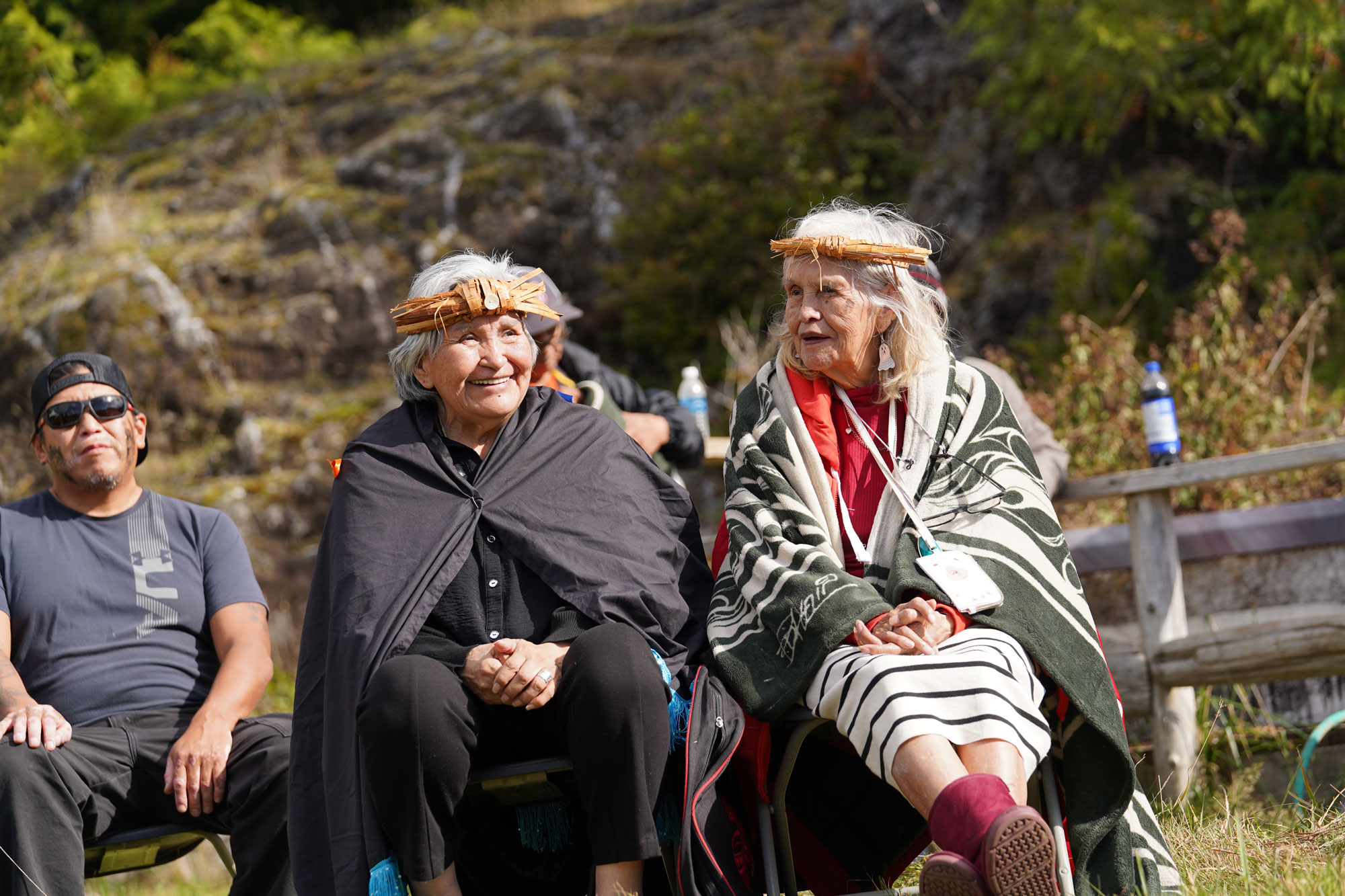
Survivors entered the buildings one last time, not as students, but as witnesses and warriors. Some chose to participate in the demolition with their own hands, striking the walls with sledgehammers or throwing rocks, acts of release and reclamation.
Finally, as the heavy machinery tore into the roof, the sound of cracking wood and shattering glass was drowned out by the songs, speeches and ceremonies of the people celebrating and healing together.

Mariah Charleston, Hesquiaht Chief Councillor, addressed the crowd: “We stand here today to support not only our survivors, but those who never made it home and all of the generations that this place has left a really negative impact on."
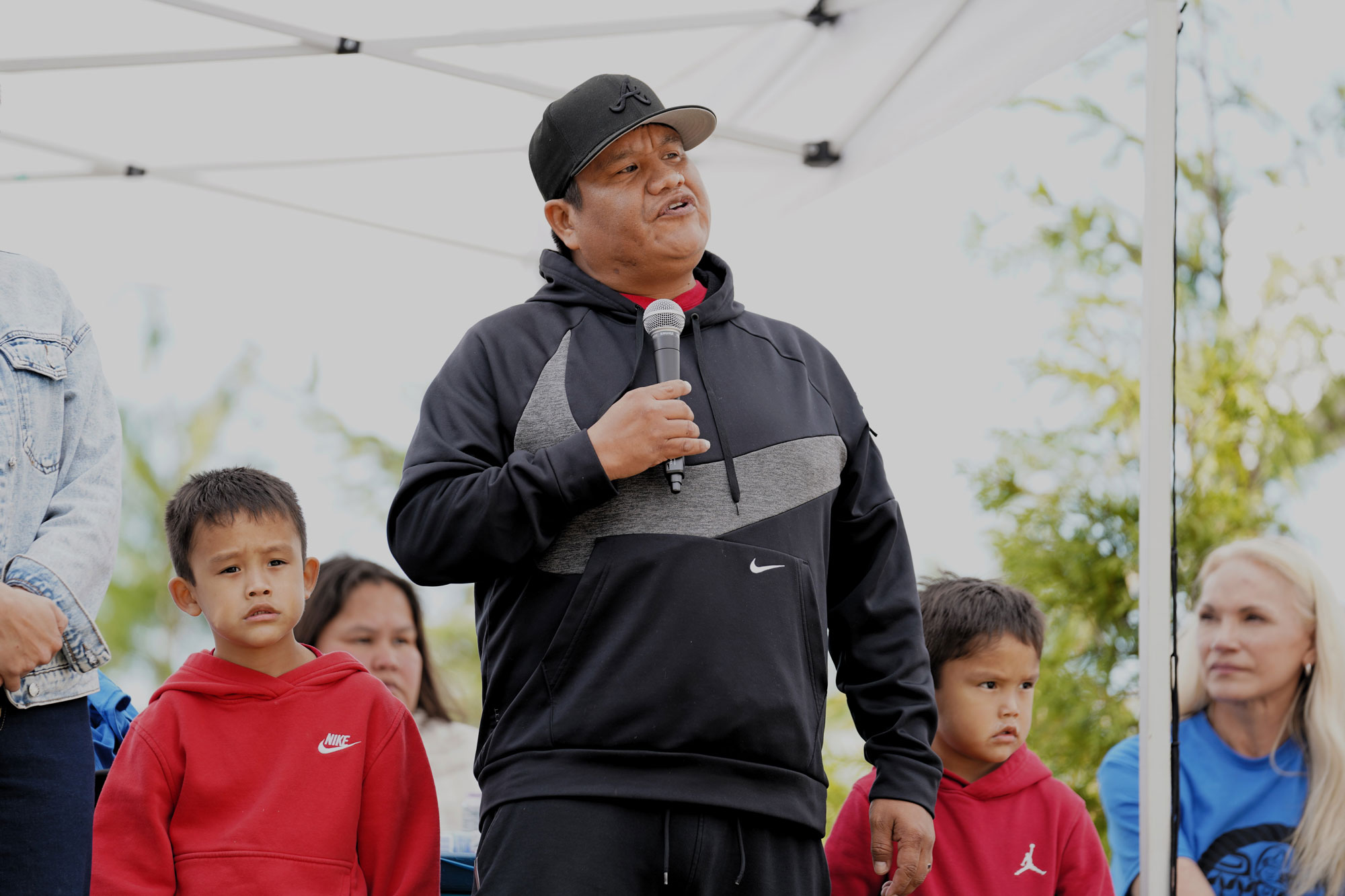
For many, the day carried multiple truths, of grief, anger, release, and strength. Preston Campbell, Councillor for Hesquiaht, spoke directly to the Survivors. “Thank you for fighting the fight. Not for yourself. Not for me, but for my boys. You did not deserve that. The life you have now, look at your grandchildren. That's proof. Living proof."
The buildings that came down that day — the gym, living quarters, and a small house — were some of the last physical structures remaining from the former residential school. Their removal was both a symbolic and tangible step toward healing. Ahousaht hereditary leadership plans to redevelop the site in ways that respect and honour the land and its people.
FNHA staff stood alongside the Ahousaht Nation and Survivors, offering cultural and emotional supports.
“We recognize the lasting impacts that residential schools have had, and continue to have, on our people," said Brennan MacDonald, Vice President of Regional Operations, Vancouver Island Region, FNHA. This day offered an opportunity to move together along the path of healing with Nations, restoring our relationships with the land and with one another. That healing is grounded in the strength and richness of our people, our cultures, and our ways of life."
Following the gathering on Meares Island, attendees travelled to the village of ʕaaḥuusʔatḥ (Ahousaht) for a feast, a continuation of the day's healing through song, dance, food, and connection.
In every beat of the drum and every step of each young dancer was a powerful truth: the Ahousaht people, and all First Nations people, are still here, thriving, teaching, and healing.

